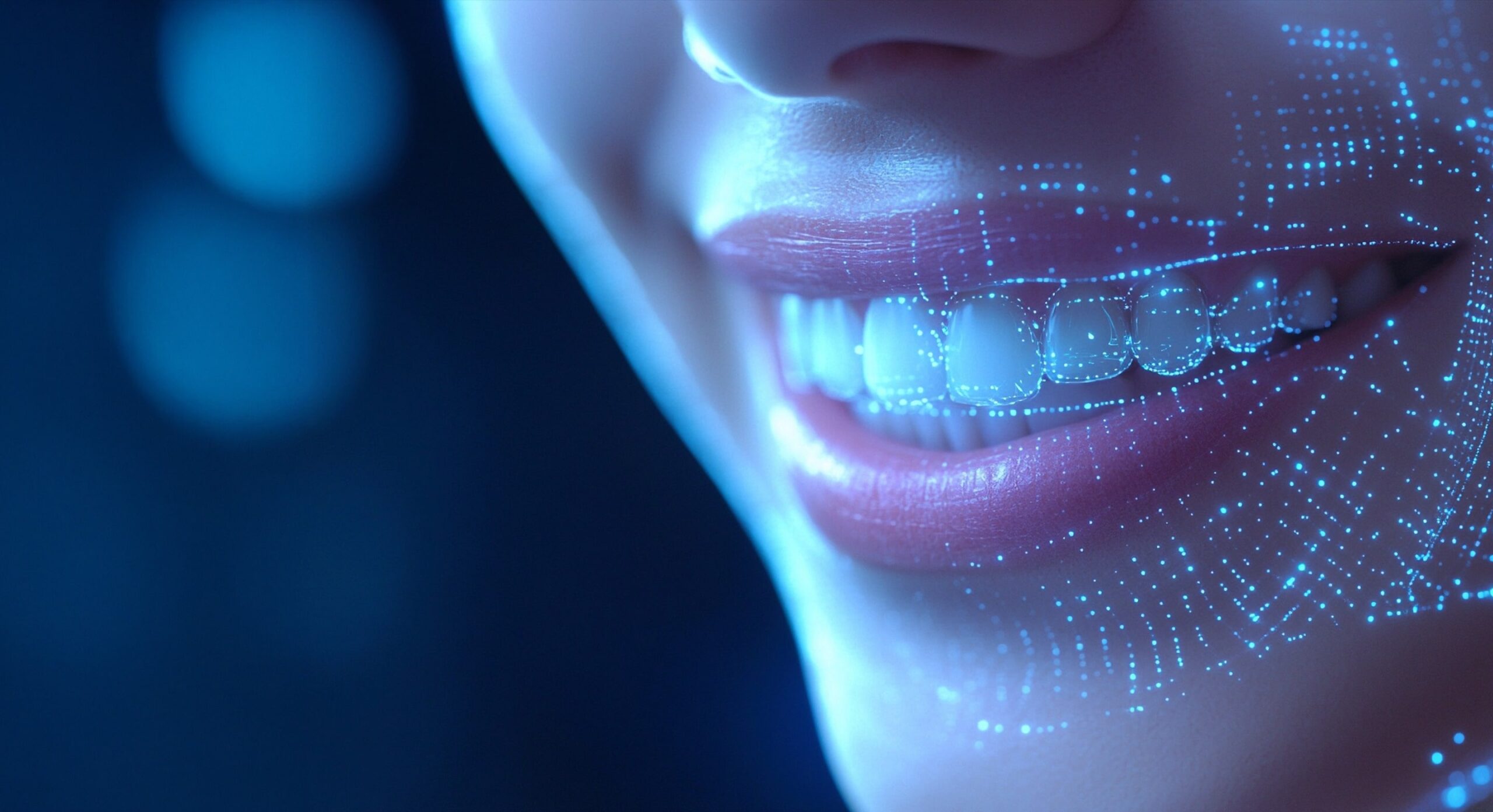Smile design begins with precise and comprehensive data collection. While traditional methods involve taking impressions manually, today's intraoral scanners create a digital twin (3D model) of a patient's teeth, gums, and oral structure in seconds. This digital data is combined with facial photographs and 3D facial scans.
This is where Artificial Intelligence (AI) comes into play. AI algorithms analyze this collected 3D data within seconds. Based not only on the current state of the teeth but also on ideal facial proportions, lip line dynamics, and aesthetic principles such as the Golden Ratio, AI recommends the most suitable smile shape for the patient with mathematical precision. By predicting possible treatment scenarios, AI accelerates the dentist's planning process and increases precision by detecting even minor errors that the human eye might miss. This analysis phase is the foundation for ensuring the longevity of the treatment outcome.
3D Modeling and Virtual Design
The ideal recommendations and analyses from AI are transferred to 3D modeling software. Here, the dentist or technician begins working on the patient's existing 3D dental model in a virtual environment. This phase is like a sculptor shaping digital clay. The software used (e.g., CAD/CAM) allows for the shape, size, curvature, and fit of the new teeth with millimeter precision.
3D modeling allows the doctor to dynamically check the fit of the newly designed smile with the patient's face. This allows the doctor to create a virtual simulation of the patient's smile, speech, and lip movements. This simulation allows the patient to see and approve the final result before starting treatment. Digital adjustments made at this stage eliminate the hours of trial and error that would otherwise take place in a physical laboratory.
Ease of Production and Application
Once the design phase is complete, it's time for physical production. This is where 3D modeling's most practical benefits come into play: Digital Manufacturing (CAD/CAM).
- Mock-up Production: The designed smile model can be quickly printed using a 3D printer. This mock-up can be easily applied to the patient's mouth, allowing for a live rehearsal of the treatment outcome.
- Permanent Restorations: Permanent restorations such as porcelain laminates, crowns or bridges are produced from high-precision and durable materials with CNC milling devices (CAD/CAM) using a digital design file.
This integration of AI and 3D modeling transforms smile design into a personalized work of art, while also accelerating the clinical process and maximizing treatment quality and predictability.
This text is prepared for general information. The appropriate treatment method may vary for each patient and therefore, it is essential to consult with a specialist dentist. Before making any decision regarding dental health, it is very important to have a detailed examination and consultation process with your physician. These articles are for informational purposes only and are not intended to replace professional medical advice.



 by
by